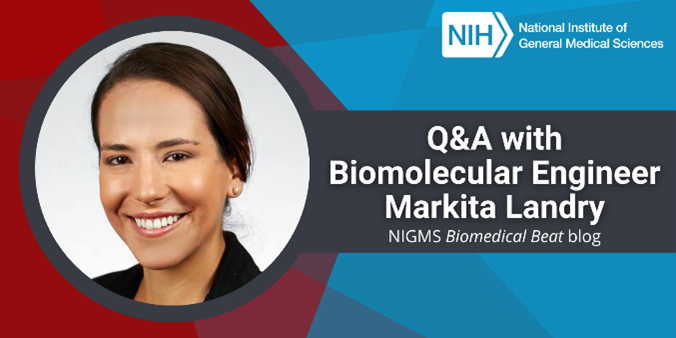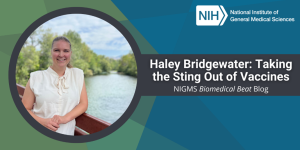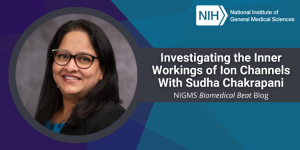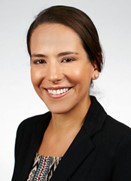
“I have a hard time envisioning a career more exciting than science. It’s really magical to see an experimental result and, for a moment, be the only person in the universe to know something about the world,” says Markita Landry, Ph.D., an associate professor of chemical and biomolecular engineering at the University of California, Berkeley. In an interview, Dr. Landry shares with us her scientific journey, research with nanoparticles, and interests outside of the lab.
Q: What sparked your interest in science?
A: I was indirectly exposed to science growing up because my mom was in computer science, but I think moving to the United States is what made me very interested in it. My mother is Bolivian; my father is French-Canadian; and I grew up mostly in Quebec, Canada. When I was halfway through high school, we moved to the United States, and, for the first time, my classes were taught in English. I really gravitated to math and science because they made sense regardless of the language they were taught in.
I went on to attend college at the University of North Carolina at Chapel Hill and was a premed major for about 2 hours. After my first introductory biology lecture, I switched to a dual degree in chemistry and physics. To me, the biological sciences seemed too complex, whereas physics and chemistry were clean, simple, and beautifully explained with math. But my curiosity about biology persisted.
Q: How did you decide to pursue a Ph.D.?
A: Honestly, I didn’t really know what a Ph.D. was until my second year of undergrad. I remember learning about doctorates and research careers and thinking, Oh wow, it’s amazing that you can make a career out of learning new things. That’s when I started getting interested in pursuing my doctorate.
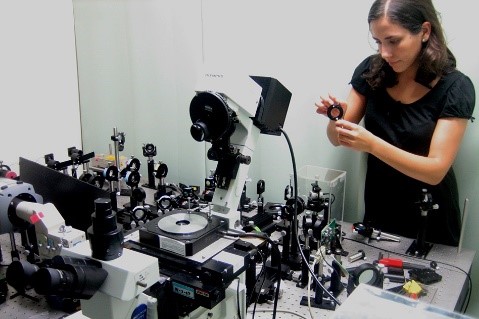
After graduating with my bachelor’s degrees, I enrolled in the chemical physics Ph.D. program at the University of Illinois at Urbana-Champaign, and I worked with a technique known as optical trapping in the lab of Dr. Yann Chemla. The optical trap approach allows us to manipulate individual molecules. I used it to study how being exposed to damaging reagents changes the elasticity of DNA molecules and how we can prevent that.
Q: What were your next steps after you earned your Ph.D.?
A: I started working as a postdoctoral researcher (postdoc) in the lab of Dr. Michael Strano at the Massachusetts Institute of Technology. The tools I built during my Ph.D. were very useful for manipulating and studying large biological molecules, and I wanted to see if they could also be useful for characterizing nanoparticles because they behave similarly. One type of nanoparticle you might have heard of are the spheres of lipids that carry messenger RNA in some COVID-19 vaccines.
During my second year as a postdoc, I applied for and accepted a faculty position at Berkeley. I deferred for a year to finish my postdoctoral work, so I officially became an assistant professor in the summer of 2016.
Q: What does your lab focus on?
A: My lab develops nanoparticles to study chemical messengers in the brain, such as dopamine and serotonin, as well as immune system signaling molecules called cytokines. Being able to track chemical messengers in the brain using nanoparticles could help us better understand and test treatments for disorders such as depression, anxiety, Alzheimer’s disease, and Parkinson’s disease. Tracking cytokines in particular could shed light on the molecular basis of autoimmune diseases, cancers, and central nervous system disorders, and potentially help us develop better diagnostic tools and therapies.
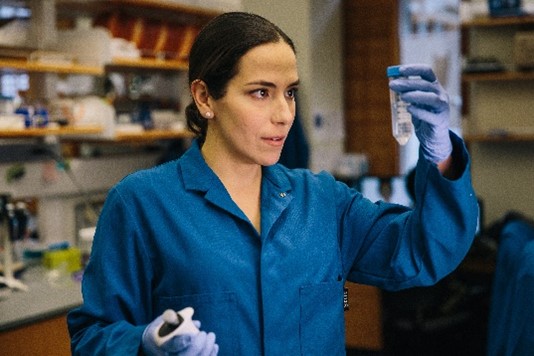
My lab also develops ways to genetically engineer plants using nanoparticles. I, like many scientists, believe that genetically engineered crops will become necessary to produce enough food for the planet’s growing population in the face of climate change. However, current approaches can take months or years to generate a genetic plant variant, and, inevitably, the variant has foreign DNA—such as from microorganisms or other plants—integrated into its genome. This means the plant must be regulated as a genetically modified organism (GMO). The nanoparticle-based methods my lab is working on can produce plants with desirable traits such as increased yield, stress tolerance, and disease and pest resistance more quickly without integrating foreign DNA into the plant’s genome. Plants produced this way could be available faster, wouldn’t require the same costly regulatory review as GMOs, and could avoid the negative public perception of GMO labeling.
Q: What are you looking forward to with your research?
A: One project I’m particularly excited about is developing plant-based, edible vaccines. The inspiration for this project was learning that my infant daughter, Rosario, gained antibodies for SARS-CoV-2—the virus that causes COVID-19—through breastfeeding after I received a COVID-19 vaccine.
As proof of principle, my lab is attempting to produce edible COVID-19 vaccines using arugula. To do so, we need to understand what makes it possible for SARS-CoV-2 antibodies to be absorbed orally from human milk, and then express those types of antibodies in plants. Edible vaccines and biologics could greatly increase the availability of these medicines in regions without a lot of biomedical infrastructure.
Q: What challenges have you faced in your career path?
A: I never had a female or Latinx science professor. Honestly, more than any scientific hurdle—and some have been quite significant—the main challenge in my research career has been feeling like I, a Bolivian and Native American (Aymara) woman, don’t fit in. This experience is one reason I focus on mentoring students from groups that are underrepresented in STEM.
One of the bigger challenges in starting my research group at Berkeley was the discord between my training and what I wanted to research. Because I didn’t have any formal training in biology, it took a little bit longer to formulate my ideas and to convince others to support them. What really helped was reaching out to collaborators who did have that expertise and were enthusiastic about translating physics and chemistry into a biological setting.
Q: What do you consider your biggest accomplishment so far?
A: Easily my biggest accomplishment is mentoring students and postdocs who have left the lab and gone on to do really cool science. As of now, I’ve trained or am training more than 60 students and postdocs, many of whom have gone into the biotech industry and one who’s in science policy. Some of those who were undergraduates are now in graduate school, and some who were graduate students are now postdocs and professors. They’ll make a much bigger impact than I ever could alone.
Q: How have you encouraged conversations between scientists and nonscientists about research?
A: Increasing science literacy is one of my passions, and I’ve given more than four dozen public talks on my lab’s work. With my colleague Dr. Dionisio Silva from the University of Havana, Cuba, I also developed a virtual scientific literacy conference targeting an international audience of scientists and nonscientists. Researchers from around the world presented talks on technology developments such as diagnostic tools and plant genetic engineering that intersect with consumer products, and attendees were able to directly engage with the scientists.
I think most scientific misconceptions and public fear surrounding divisive scientific topics, such as vaccines, could be reduced if dialogue between laypeople and the scientific community were more common.
Q: What are your interests outside of science?
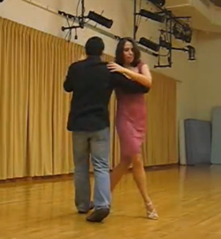
A: I love dance and outdoor exploration because they release my mind from focusing on very specific problems and allow me to take a more intuitive approach to my research when I return to it . In graduate school, I won the “dance your Ph.D.” contest run by the American Association for the Advancement of Science and Science magazine for a tango representation of high-resolution optical trapping. More recently, I completed the “W” backpacking loop in Chilean Patagonia and hiked in the Stanislaus National Forest.
Q: What advice would you give students who are interested in pursuing a career in science?
A: I think the best thing a student can do to gauge their interest in science is to get hands-on exposure either by talking to scientists or volunteering in a research lab. Without that hands-on experience, it’s hard to know to what extent you’ll enjoy doing science, because as exhilarating as it can be when experiments work, most of the time they don’t.
Also, don’t be afraid to shift fields if you want to. Doing so requires a lot of work, but it can really amplify your contributions in science by bringing a different perspective to a new field.
Dr. Landry’s research is supported by the NIGMS Maximizing Investigators’ Research Award through grant R35GM128922.
Other Posts You May Like
- Understanding Signaling Through Cell Membranes: Q&A With Chrystal Starbird
- Bil Clemons: Following Scientific Curiosity
- From Science Fair to Science Lab: Q&A With Chelsey Spriggs
- Haley Bridgewater: Taking the Sting Out of Vaccines
- Investigating the Inner Workings of Ion Channels With Sudha Chakrapani


